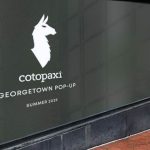Amidst the turmoil brewing in the U.S. Congress over the growing illegal immigrant population in the country, Outdoor Industry Foundation is taking a different look at the Hispanic culture that is adding diversity to the country. With the help of UCLAs Anderson School of Management Applied Management Research Program, OIF conducted a very thorough study identifying opportunities for the outdoor industry within the Hispanic community called The Hispanic Community and Outdoor Recreation. Apart from the mild language barrier (UCLA & OIF actually had more surveys returned in English than Spanish in spite of offering both options) the study found several profound cultural differences that can change the way marketing, product design, and public relations departments address the Latino community.
Several years ago, Hispanics became the largest minority group in the U.S. According to the study, they are projected to account for 20% of U.S. residents by 2012 and nearly 25% by 2050. Today, there are very few outdoor brands addressing this population segment. The vast majority of companies have not taken the step of having their product information translated into Spanish. The study recommends a more concerted effort is needed to provide information and materials on outdoor recreation in Spanish. The Spanish community is clearly interested in outdoor recreation. The report says 89% of Hispanics find outdoor activities fun, and 82% believe outdoor activities are healthy. However, 71% of male and 64% of female Hispanics do not participate in outdoor activities due to lack of time, but leisure time for the Hispanic population is increasing. Since 1990 it has gone from 2.9 hours to 3.9 hours a day on average. The study also found that Hispanics are not converting this extra time into more TV time, like much of the balance of the U.S. population.
Creating the right message includes avoiding pitfalls that could alienate the Latino community. The first of these potential mistakes, as laid out by the study, is treating Hispanics as a homogeneous group. Like all immigrants to the U.S., different nationalities have different cultures and traditions all of these should be respected. The study states that there are over twenty different countries of origin, different dialects from generations, different socio-economic classes, and many other differences. The second is to assume all demographics respond similarly. For example, fully one-third of all Hispanics in the U.S. are under the age of 18 and the youth population view English as their primary language.
Ninety percent of five- to 17-year-olds are bilingual, while only 71% of 18- to 64-year-olds are bi-lingual. While Spanish based marketing campaigns may resonate with some, the youth are more likely to identify with the English language.
Probably the most egregious pitfall is to assume all Hispanics are low-income and cannot afford to participate in outdoor activities. In fact, the study shows that income does not have an impact on the decision to participate. Hispanic households spend more on footwear in absolute dollars than the rest of the U.S. population. The study does much more than simply point out the challenges faced by the industry in its efforts to address the Hispanic population in the country. It sets out several proactive recommendations to capture the attention of this growing population segment. Like any marketing initiative, addressing a new culture takes time and dedication. A consistent and effective message will, in time, resonate throughout the community.
The top recommendation was to find or create grassroots events that effectively address the population and promote them. Some of the findings of the study illustrate that this strategy can be even more effective in the Hispanic community than it is in the current outdoor market. The study reported that when Hispanics immigrate into the country, they rely on their family and friends to function as their mentors to help them make the transition successfully. This creates a very tight-knit community structure and winning over this community is important because this culture can be much more brand loyal than the non-Hispanic population.
After looking at all of these trends and the additional survey results, the study concluded, “By combining a grass-roots marketing campaign with the loyal nature of the Hispanic market, outdoor retailers have the opportunity to expose this growing population to quality products and services and ensure future years of sales.”
Church and religion play a much larger role in the Hispanic community and is considered by many to be “the most trusted voice.” Over 64% of Hispanics attend church on a regular basis compared to the average American that attends 40% of the time. The outdoor industry can also look to another trusted source to promote outdoor activity doctors. Doctors are viewed as mentors in the Hispanic community and promoting outdoor activity as a way to prevent obesity and promote health can be very effective. This leads to one of the key challenges facing the outdoor industry in the Hispanic community. The Hispanic youth population is, on average, more obese that the rest of the U.S. population. Nearly 25% of Hispanic children 12-18 are overweight, compared to 12.9% of non-Hispanic white children and 21.8% of African American kids. The study states that part of this is due to the Hispanic culture granting childrens dietary wishes and part is due to the U.S. cultural rejection of physical education and activity in schools.
The study concluded that the approach towards getting Hispanic youth active in outdoor activities should be consistent with the current approach toward acquiring new participants – gateway activities should be used as a stepping-stone to get youth involved. Getting Hispanic youth to participate in more expensive, complex, time consuming outdoor activities such as downhill skiing, kayaking, and rafting should be secondary. Increasing participation in gateway activities is likely a simple matter of education; many Hispanic children do not know what activities are available locally.
Overall, The Hispanic Community and Outdoor Recreation provides a comprehensive overview for the outdoor industry to target this market in a constructive way that will benefit not only the manufacturers and retailers, but also the Hispanic community. In spite of current events in the government, this is a rapidly growing, vibrant and valuable population for the U.S. retail community as a whole.















